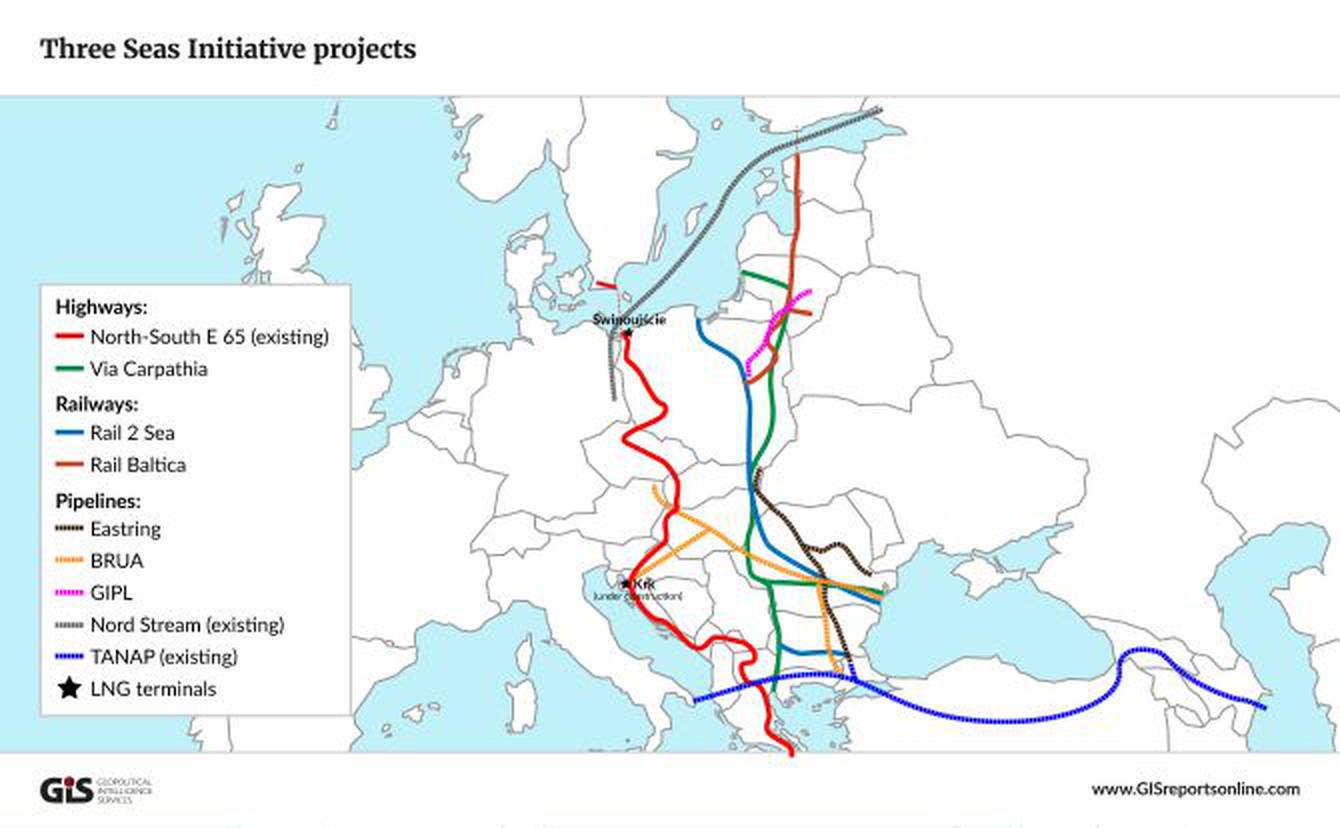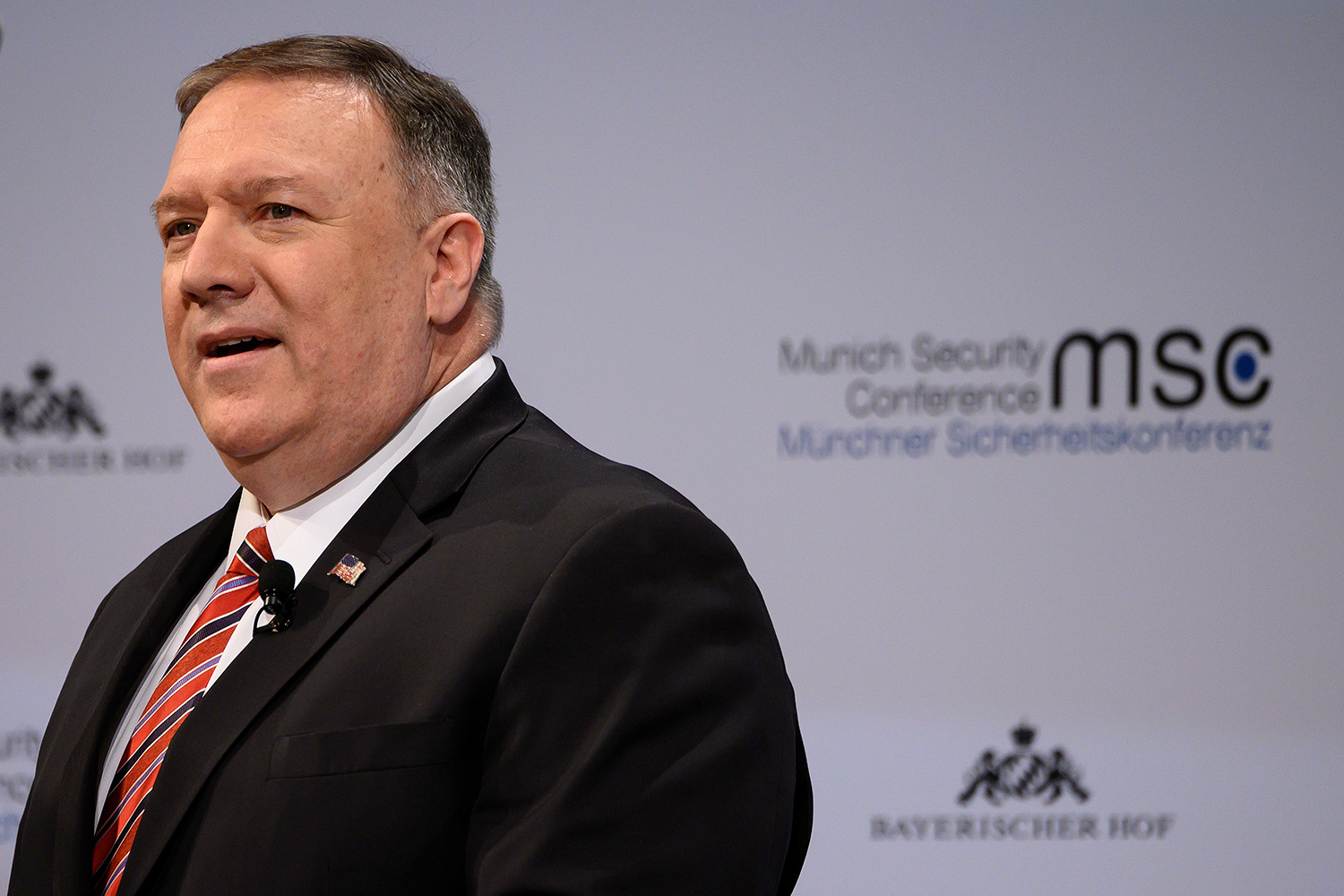
By Matthew Thomas in Policy | March 16, 2020
Last month, U.S. Secretary of State Mike Pompeo announced that the United States would commit up to $1 Billion in support for the Three Seas Initiative. In so doing, Congress and the administration are providing much needed assistance toward developing the economic and security infrastructure in Central and Eastern Europe. This initiative, launched in 2015 by the Polish and Croatian presidents, aims to make Central Europe a “backbone of European resilience,” in the words of Croatian President Kolinda Grabar-Kitarović. If successful, the initiative will lead both to greater economic prosperity and interconnectedness with the rest of Europe, and will undercut Russian and Chinese pressure and influence.
More specifically, the Three Seas Initiative will correct infrastructural imbalance which runs on an almost entirely east-west axis. Old pipelines and highways primarily run east-west throughout Central Europe, once bringing Soviet oil and gas to Europe, and continuing to foster Europe’s reliance on Russian energy. By creating a north-south infrastructural axis, the Three Seas Initiative will break up what was once a Soviet tool of control and subjugation in Central Europe and support the development of energy, transportation, and even digital infrastructure in the region. This will create a more interconnected Europe, and a more self-sufficient Europe, or at very least a Europe with greater diversification of sources for all commodities.
One such project seeks to build a liquified natural gas (LNG) terminal in Krk, Croatia, which would be connected to the existing terminals in Klaipėda, Lithuania and Świnoujście, Poland with north-south pipelines. This will reduce the reliance on Russian gas imports in the region, weakening the diplomatic leverage Russia enjoys. Also, and of particular importance to the Baltics, the Polish-Lithuanian gas interconnector (GIPL) project and synchronization of the Baltic power grid with Continental Europe are listed as priority projects. These will foster diversification of gas resources and bring the Baltic power grid out from Moscow’s control where it currently sits under the old Soviet-era BRELL Agreement. By improving energy security in the region and reducing reliance on Russian supply, the Three Seas Initiative is an investment in both collective and national defense as well as economic growth.
 A sample of Three Seas Initiative projects, plus TANAP and Nord Stream. Source: GISreportsonline.com
A sample of Three Seas Initiative projects, plus TANAP and Nord Stream. Source: GISreportsonline.com
In the transportation sector, Rail Baltica is a key project for Latvia, Lithuania, and Estonia. The project’s aim is to integrate the Baltics’ rail system with Continental Europe, and involves laying European gauge track in a north-south route from Tallinn to Warsaw, via Rīga and Kaunas and with a short connecting jaunt to Vilnius. This project will provide a rail connection to North Sea ports in Western Europe, and will reduce reliance on the highway system for cargo and freight transport. Not only will this improve the flow of goods and people in the region, but it will also change the operational landscape logistically for NATO in the event of conflict.
In tandem with Rail Baltica, improvements to the “Via Baltica” highway route are listed as a priority project under the Three Seas Initiative. Presently, freight transport accounts for approximately a 30 percent share of all traffic along the route, and in the case of Lithuania, 90 percent of all freight between Lithuania and the rest of Europe travels by road. Under the status quo, the road system is inadequate for demand in freight and passenger travel. Rail Baltica should alleviate some of the problem, but this corridor remains a critical artery for both commerce and defense. Upgrades, therefore, are a key interest for national security purposes as well, expediting movements of troops and supplies. Other transport projects, such as the Via Carpathia and a Baltic-Adriatic axis, will connect the Baltics to the Black Sea and Adriatic Sea, further erasing their relative isolation.
Finally, with regard to digital infrastructure, the Three Seas Initiative includes projects on digital trade, research collaboration, and an ambitious plan to link communications infrastructure, fiber optics, and eventually 5G technology infrastructure, dubbed the “Three Seas Digital Highway.” 5G infrastructure is a major issue at stake here, as the Chinese are key competitors in the game, and there is grave concern that Chinese 5G systems will ultimately serve as tools of espionage and subversion. As such, investing in telecommunications and 5G infrastructure without going to the Chinese regime to buy it is prudent to protect security in the cyber-domain across the region.
 U.S. Secretary of State Mike Pompeo announced the U.S. would pledge up to $1B for the Three Seas Initiative at the Münich Security Conference, February 2020. Photo Source: Atlantic Council, via Reuters.
U.S. Secretary of State Mike Pompeo announced the U.S. would pledge up to $1B for the Three Seas Initiative at the Münich Security Conference, February 2020. Photo Source: Atlantic Council, via Reuters.
The Three Seas Initiative consists of twelve members: Estonia, Latvia, Lithuania, Poland, Czech Republic, Slovakia, Austria, Hungary, Slovenia, Croatia, Bulgaria, and Romania. All twelve are EU members, and with the exception of Austria, each are part of NATO as well. From an American perspective, the initiative is an extremely positive development. As Atlantic Council’s Ian Brzezinski points out, supporting the Three Seas Initiative falls squarely within current American strategy, “[providing] justified support for some of America’s closest allies,” “[reinforcing] Central European efforts to counter malign Russian and Chinese pressure and influence,” and providing tangible return on investment for Washington’s foreign policy objectives in the region. Early on, Washington’s enthusiastic support for the project led to skepticism from some Western European EU members, but these have also come on board as well. And with regard to the EU, Austria is a key player from the perspective of the United States and the allies on NATO’s Eastern Flank. By joining the project, Austria is positioning itself to reduce dependence on Russia for energy and to increase its economic connections to European states in the East. This changes the balance of diplomatic leverage in Vienna, and will have an impact on positions it takes within the EU. Another friendly voice in EU institutions will certainly be welcome for members such as Poland, Lithuania, Latvia, and Estonia.
By connecting Central and Eastern Europe along a north-south axis, the Three Seas Initiative will enhance security and end a legacy of Soviet subjugation that still effects Europe today. It is a step in the right direction for ensuring stability, prosperity, and freedom for posterity. In short, it is a no-brainer for its member states and the U.S. alike.
Cover Photo: Three Seas Initiative member states. Source: ceep.be
Sources:
Press Release, Atlantic Council. February 15, 2020. Accessed March 14, 2020. Web. https://www.atlanticcouncil.org/news/press-releases/us-commits-1-billion-dollars-to-develop-central-european-infrastructure/
David A. Wemer, The New Atlanticist. Atlantic Council. February 11, 2019. Accessed March 14, 2020. Web. https://www.atlanticcouncil.org/blogs/new-atlanticist/the-three-seas-initiative-explained-2/
Three-seas.eu, List of Priority Interconnection Projects. 2018. Accessed March 16, 2020. http://three-seas.eu/wp-content/uploads/2018/09/LIST-OF-PRIORITY-INTERCONNECTION-PROJECTS-2018.pdf
